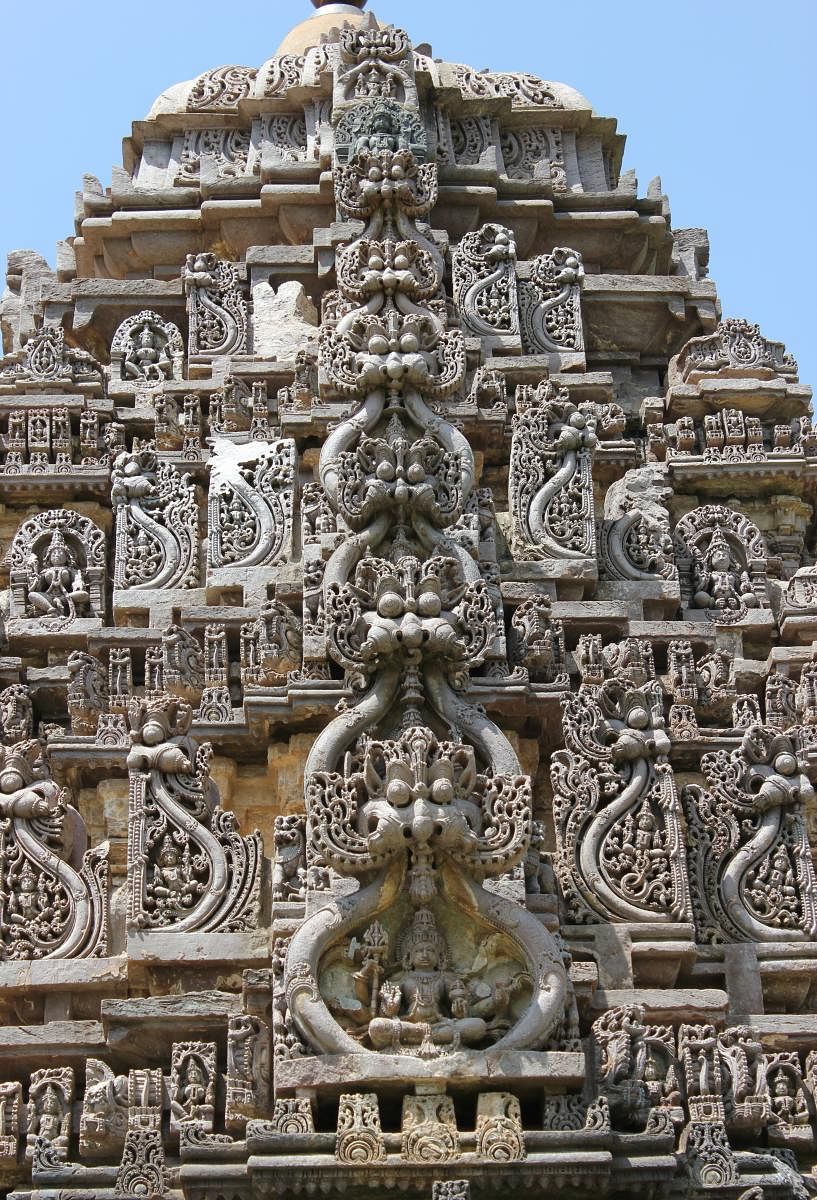

The Hoysala dynasty is integral to the history of Karnataka. If the story of Sala slaying a tiger elicits pride, then the architecture of the period elicits awe. Innumerable Hoysala temples in various parts of the state bear testimony to the unimaginable architectural capabilities of this dynasty. The Hoysala temples normally comprise huge complexes but there are a few smaller temples that match the larger ones in beauty and magnificence.
Around 67 km north of Chikkamagaluru, close to Tarikere, is the quaint village of Amritapura where stands one of the oldest known Hoysala temples; the Amrutheshwara Temple. Said to be built in 1196 CE by Amrutheshwara Dandanayaka under the rule of Veera Ballala II, this temple is a classic example of the ancient Hoysala architecture.
The closed mantapa connects the sanctum sanctorum and the open mantapa, and is supported by lathe-turned pillars. The shrine is square in shape and has a shikhara adorned with the sculptures of kirthimukhas and miniature decorative towers as per the ekakuta design.
The mantapa’s ceiling is adorned with floral designs. The exterior wall of the open mantapa has panel sculptures, scenes from Hindu epics and legends. One can see the depiction of stories from the Ramayana on the southern wall, in the anti-clockwise direction. There are 70 panels beginning with the Putrakameshti Yaga of Dasharatha and ending with the reunion of Rama, Sita and Lakshmana.
Unique feature
The next 25 panels depict the life and times of Lord Krishna and 45 panels tell the story of the Mahabharata. Both these panels are in the clockwise direction. On the sukanasi tower, there is a breathtakingly beautiful sculpture of Shiva killing Gajasura. The signature sculpture of Sala slaying the tiger can be found on a tower near the sukanasi. That Ruvari Mallitamma, believed to be one of the great architects of the Hoysala dynasty, started his career as a sculptor here in the Amrutheshwara Temple, adds to the historical importance of this temple.
The main deity, Lord Shiva, is worshipped in the form of a Saligrama Linga, said to be about 300 years old, and finds its origin in River Kandikevale in Nepal. It is only on the auspicious day of Sankranthi that sunlight kisses the Shiva Linga. To the left of the deity is a lamp, the legend goes that it has been burning without any human assistance for the last 200 years! The element of surprise is the idol of Sharada Devi sans veena, consecrated to the right of the main deity. Children are brought here for Aksharabhayasa and it is believed that those facing problems related to education find solace here at the feet of Sharada Devi.
On the porch of Amrutheshwara Temple stands a large stone inscription consisting of poems composed by the great medieval Kannada poet Janna. The temple is very well maintained. The Archaeological Survey of India has done a commendable job with the lush green lawn. Amrutheshwara Temple is a very good choice of location for a one day trip from Bengaluru.